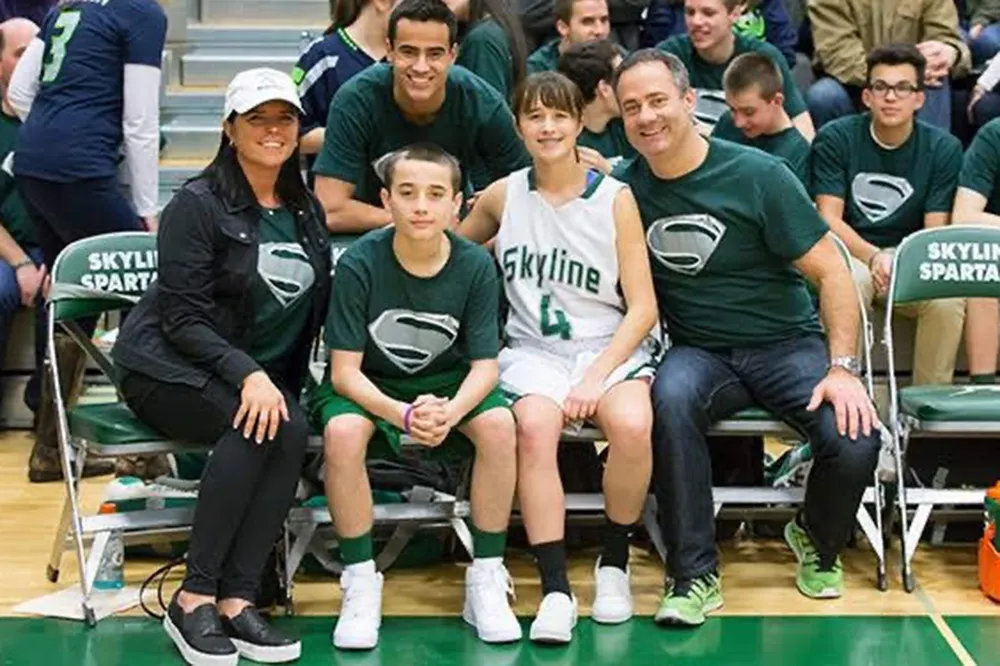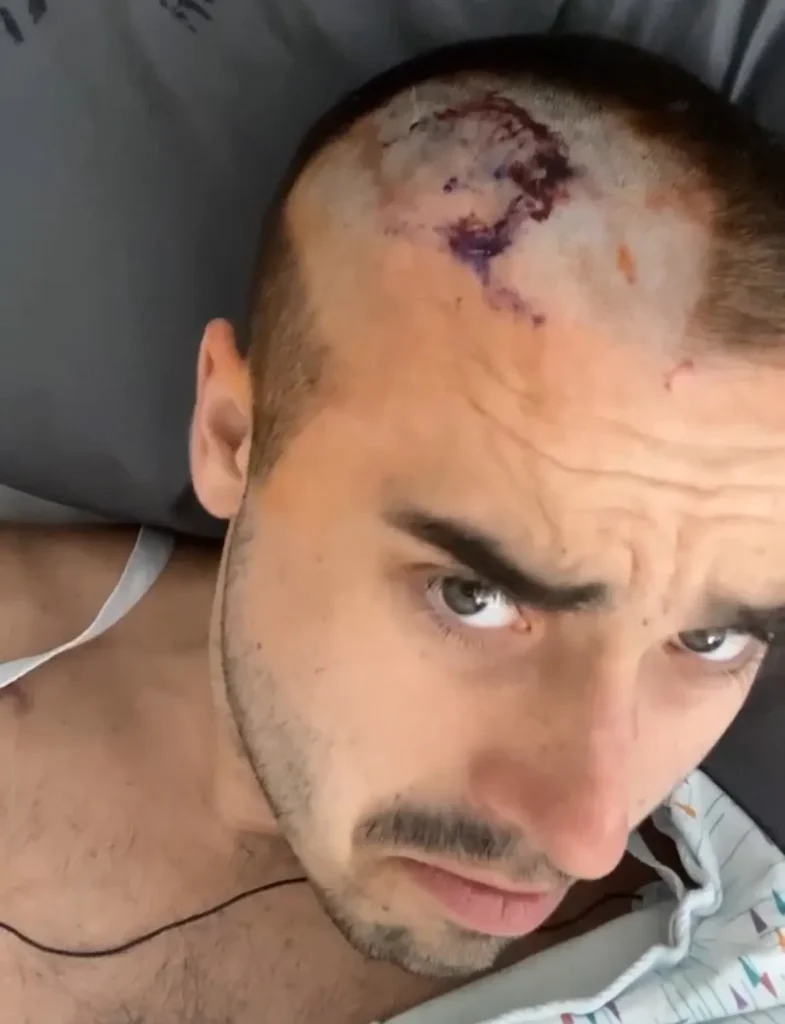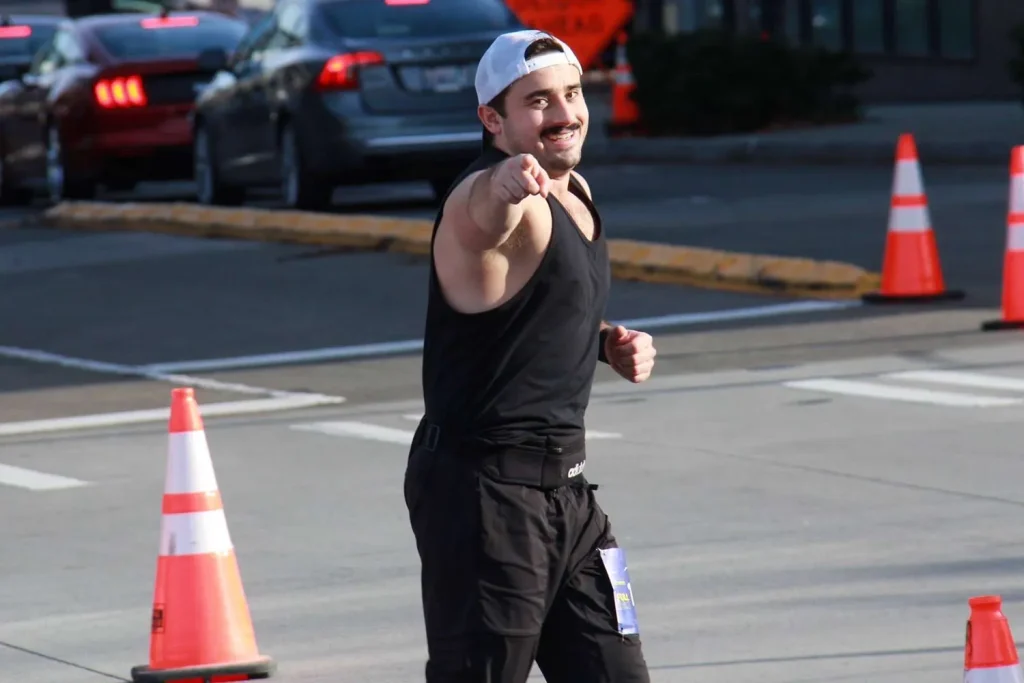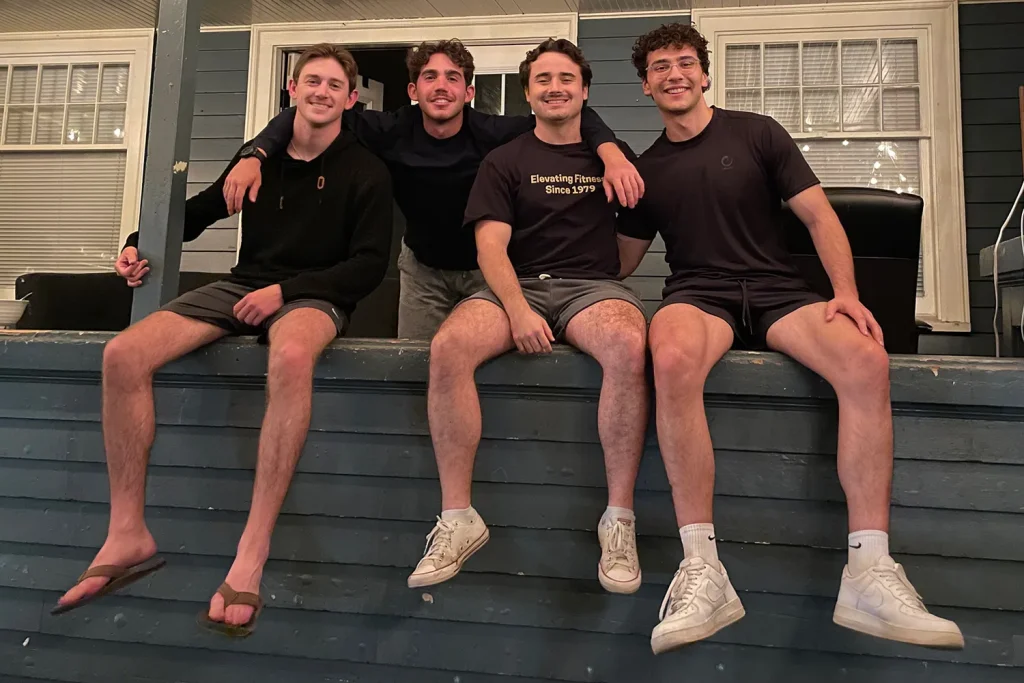At 11, He Thought It Was Just Headaches — Then Came a Brain Tumor Diagnosis. Over a Decade Later, Sam Taylor Is Raising Millions to Help Other Children Face the Same Battle
When Sam Taylor was just 11 years old, he thought his persistent headaches were nothing more than the typical growing pains of childhood. Like many kids his age, he assumed a good night’s sleep or a few painkillers would make them go away. But what started as a dull, nagging ache soon became unbearable pressure behind his eyes — a pain that would ultimately lead to a life-changing diagnosis and a new purpose that has defined his life ever since.

Now, at 22, Taylor is looking back on the decade-long journey that began with two simple symptoms and changed everything. In a candid interview, he reflects on how what doctors initially thought was a routine case of migraines turned out to be a low-grade optic glioma — a rare, slow-growing brain tumor that affects the optic nerve and vision. It was a discovery that would not only transform his health but also inspire a mission that has already helped countless other children facing the same illness.

“I had so much pressure in my head that I remember the doctor saying, ‘This is one of the highest cases of pressure in the head that we’ve seen,’” Taylor recalls. “I was scared, but I also remember feeling strangely calm, like my mind was trying to protect me from the reality of it.”

Doctors explained that an optic glioma can cause swelling around the optic nerves, leading to headaches, vision loss, and other neurological issues. For a child still in middle school, it was a lot to process. “At 11, you don’t fully understand what the word ‘tumor’ means,” Taylor says. “You just know it’s serious. You see your parents cry, and that’s when it really hits you.”
Taylor underwent a battery of tests, scans, and medical consultations before doctors decided on a treatment plan. The tumor was low-grade, meaning it wasn’t spreading aggressively, but it would still require close monitoring and possible intervention if it grew or affected his vision. Over time, Taylor’s life began to revolve around medical appointments, treatments, and uncertainty. “It’s like living in chapters,” he explains. “There’s before diagnosis, and then there’s everything after.”

Despite the challenges, Taylor found resilience in unexpected places — in his family’s unwavering support, in his medical team’s compassion, and eventually, in the community he began to build online. What started as a small blog documenting his experience grew into something much larger: a global movement of patients, families, and advocates raising awareness for pediatric brain tumors.
By the time Taylor reached high school, he had already become a recognizable name in the childhood cancer community. Using social media, he began sharing his story not as a patient seeking sympathy, but as someone determined to make change. “I didn’t want to be known as the kid with a tumor,” he says. “I wanted to be known as the guy who did something about it.”

In the years since, Taylor has done exactly that. Through a combination of grassroots fundraising events, corporate partnerships, and online campaigns, he has helped raise more than $1.2 million for organizations supporting children with optic gliomas and similar conditions. His efforts have funded research, provided resources for families, and even sponsored hospital programs that focus on mental health support for young patients.
The turning point, Taylor says, came when he realized how isolating rare diseases can be — not just for patients, but for their families. “When you’re told your child has a brain tumor, your world just stops. You don’t know what to do or who to talk to,” he explains. “That’s why I wanted to build something that connects people, that gives them hope.”

That desire led him to launch a foundation dedicated to awareness and advocacy. He organized charity runs, benefit concerts, and online fundraisers that caught the attention of local media and major donors. “At first, I thought I’d be happy raising a few thousand dollars,” he says with a smile. “But the response was overwhelming. People wanted to help, they just needed someone to lead the way.”
Taylor’s story resonated deeply because it wasn’t just about surviving an illness — it was about finding purpose through pain. His honesty about the mental and emotional toll of his diagnosis has made him a relatable figure to countless others navigating similar experiences. “I still have bad days,” he admits. “There are days when I feel exhausted or scared about the future. But I’ve learned that helping others helps me heal too.”

Today, Taylor continues to deal with lingering health challenges. While his tumor remains stable, the side effects — including occasional headaches and vision fluctuations — are reminders of the journey he’s endured. Yet he refuses to let them define him. “I used to wake up every morning and check if my eyesight had changed,” he says. “Now, I wake up and think about what I can do today to make someone else’s life easier.”
His approach to life has inspired many, including parents of children currently undergoing treatment for optic gliomas. Messages of gratitude pour into his inbox daily, from families who say his advocacy gave them strength during their darkest days. “It’s the most humbling feeling,” Taylor shares. “When someone tells you that your story made them feel less alone, there’s nothing more powerful than that.”
Beyond his foundation, Taylor is now working on educational outreach programs that bring awareness of rare pediatric conditions to schools. “When I was in middle school, I didn’t know anything about brain tumors or how to talk about serious illnesses,” he says. “Kids need to learn empathy early. They need to understand that someone can be sick and still strong, still capable of doing great things.”
His advocacy has caught the attention of major medical organizations as well. Pediatric neurology centers have partnered with his initiative to develop digital resources for families navigating early symptoms of optic gliomas. “Sam’s dedication has been extraordinary,” says one physician who worked closely with him. “He’s not just raising money — he’s changing the way people think about childhood illness.”
When asked what keeps him motivated, Taylor doesn’t hesitate. “The kids,” he says softly. “Every time I visit a hospital or meet another child with the same diagnosis, I see a bit of myself in them. I remember what it felt like to be that scared 11-year-old. And I want them to see what’s possible — that there’s life, joy, and purpose after diagnosis.”
Despite his calm optimism, Taylor admits there are moments when the weight of his mission feels heavy. “You see loss. You see kids who don’t make it. That’s the hardest part,” he says quietly. “But then you also see resilience. You see families laughing through the pain, celebrating small victories. That’s what keeps me going.”
As he looks toward the future, Taylor is expanding his focus beyond fundraising. He’s currently working with medical researchers to push for more funding toward early detection and non-invasive treatment options for pediatric brain tumors. “If we can find these tumors earlier, we can save more vision and more lives,” he explains. “Awareness can literally be the difference between a child thriving or losing their sight.”
For Taylor, the journey has come full circle. From a terrified 11-year-old boy in a doctor’s office to a 22-year-old advocate changing lives, his story is one of courage, compassion, and conviction. “If you told me back then that all of this would come out of something so painful, I wouldn’t have believed you,” he says. “But I’ve learned that sometimes the hardest things in life give you the clearest sense of purpose.”
His advice to others going through similar experiences is simple but profound. “Don’t wait to feel ready to make a difference,” he says. “Start small. Share your story. Help one person. Because once you do, it grows — and before you know it, you’ve built something bigger than yourself.”
As he continues his mission, Sam Taylor stands as a powerful reminder that even in the face of illness, one person’s determination can light the way for thousands. His story isn’t just about surviving a tumor — it’s about redefining what it means to live fully, fearlessly, and for others.


